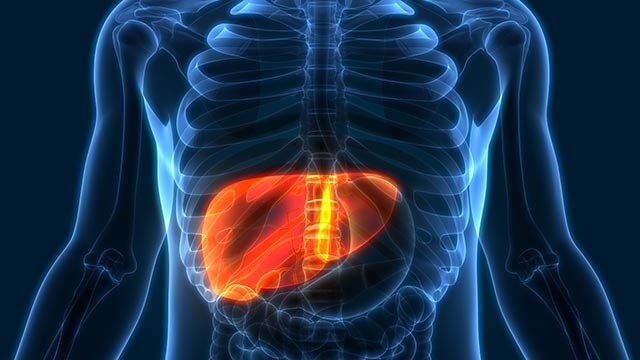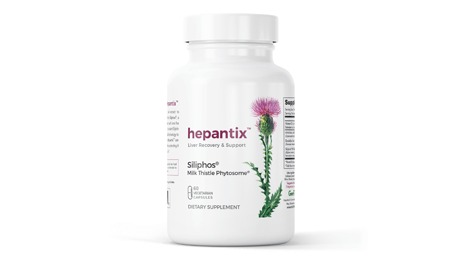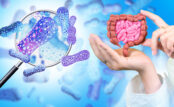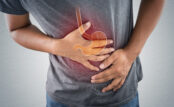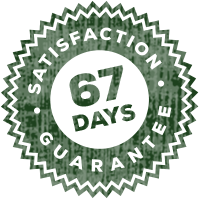The liver is the largest internal organ in the body and plays a vital role in human survival. Located in the upper-right side of the abdomen, the liver helps your body digest food, remove poisons, and store energy. Blood from the digestive system filters through the liver prior to going elsewhere in the body.
When this major organ isn’t able to function optimally, you could potentially experience moderate to severe health concerns. Fatty liver disease is one of the moderate concerns that can become a more serious one.
After this don’t forget to also check out our post on, “Gut Health: Don’t Ignore These 7 Warning Signs!“
What is Fatty Liver Disease?
Fatty liver disease (steatosis) is the buildup of excess fat in the liver cells. Excess fat refers to more than 10% of the liver’s weight. Increasingly common in many parts of the world, fatty liver disease affects nearly 25% of people globally1. While it is normal for a healthy liver to contain some fat, if it builds up too much you may develop serious complications.
Too much fat in your liver can cause inflammation, which can lead to liver damage and scarring. In severe cases, this scarring can lead to liver failure. In most cases, fatty liver is reversible at an early stage, but it can progress to advanced liver disease.
Nonalcoholic Fatty Liver Disease
There are two types of nonalcoholic fatty liver disease (NAFLD), in addition to alcoholic fatty liver disease. Most people with NAFLD have simple fatty liver. Simple fatty liver means you have fat in your liver, but you may not have damage to your liver cells or inflammation in your liver. In most cases, simple fatty liver doesn’t get worse or cause serious problems with your liver.
Nonalcoholic steatohepatitis (NASH) is the second type of NAFLD. NASH is much more serious because it means you have inflammation in your liver. Inflammation and liver cell damage due to NASH can cause serious problems involving liver scarring (fibrosis and cirrhosis) and liver cancer. Approximately 1 out of every 5 people with NAFLD have NASH.
Alcoholic Fatty Liver Disease
Alcoholic fatty liver disease (AFLD) is preventable and usually gets better once you stop drinking alcohol. Alcohol-related fatty liver disease comes first and will progress into more serious problems if you keep drinking. If it continues to get worse it can become alcoholic hepatitis or, over time, may turn into alcoholic cirrhosis.
What are the Symptoms of Fatty Liver Disease?
Unfortunately, though there are several signs and symptoms of fatty liver you can look for, they may not be noticeable or present. Many people don’t realize they have fatty liver at all. You may feel fatigued or have pain in the upper right side of the abdomen (where your liver is located).
If you have fatty liver that progresses to nonalcoholic steatohepatitis (NASH) or cirrhosis, you may experience the following symptoms:
- Swollen belly
- Enlarged blood vessels under the skin
- Red palms
- Larger-than-normal breasts in men
- Jaundice (skin and eyes that appear yellowish)
- Loss of appetite
- Nausea and vomiting
- Moderate to severe abdominal pain
Since symptoms may be subtle, a blood test is usually the best way to detect whether you have fatty liver disease. Elevated levels of liver enzymes, elevated insulin levels, and elevated triglyceride levels are all indicators of fatty liver.
What are the Causes of Fatty Liver Disease?
Fatty liver develops when your body isn’t able to process and break down or metabolize fats efficiently. This excess fat is stored in liver cells, where it accumulates and leads to fatty liver disease. The build-up of fat can be a result of a variety of things.
Drinking too much alcohol (alcohol abuse) can cause alcoholic fatty liver disease (AFLD), the first state of alcohol-related liver disease. The cause is less clear for people who don’t drink a lot of alcohol. It isn’t fully known why some people with NAFLD have simple fatty liver and some get nonalcoholic steatohepatitis (NASH).
Though some contributing factors most commonly linked to NASH include:
- Overweight (body mass index of 25-30)
- Obesity (body mass index over 30)
- Type 2 Diabetes
- High levels of fat (especially triglycerides) in your blood
- Low levels of high-density lipoprotein (HDL) cholesterol
- High blood sugar
- High blood pressure
- Rapid weight loss
- Malnutrition
- Insulin resistance
- Polycystic ovary syndrome
- Sleep apnea
- Underactive thyroid (hypothyroidism)
- Underactive pituitary gland (hypopituitarism)
Insulin resistance may be the most important trigger of NASH. Insulin is a hormone that helps regulate the amount of sugar in the blood. Since this condition can remain stable for years, causing little harm, if you develop a bacterial infection or hormonal abnormality, this “second hit” to your liver may lead to cirrhosis.
Even if you have none of these conditions or factors, fatty liver can still develop. Certain genes may increase your risk of developing fatty liver, as well as:
- Some types of infections (i.e. hepatitis C)
- Medication side effects
- Exposure to certain toxins
The causes of NAFLD include obesity, insulin resistance, pre-existing medical conditions, metabolic syndrome, medication side effects, and impaired gut health.
What Does Fatty Liver Disease Do To Your Body?
Simple fatty liver disease usually causes no damage to your body. Excess fat that leads to inflammation of the liver does cause liver damage. Over time an inflamed liver can become scarred or hardened and often leads to liver failure. Non-alcoholic steatohepatitis (NASH) is one of the top three causes of cirrhosis2. NASH can damage your liver for years without causing any significant symptoms.
If fatty liver disease gets worse, you may experience weight loss, fatigue, abdominal discomfort, or weakness as the disease advances through the following three stages:
- Steatohepatiis – Your liver becomes inflamed, which damages its tissue.
- Fibrosis – Scar tissue forms where your liver has been damaged.
- Cirrhosis – Extensive scar tissue replaces healthy tissue.
The hard scar tissue that replaces healthy liver tissue slows down its ability to function normally. Eventually, liver function may be blocked entirely leading to liver failure and liver cancer.
5 Natural Ways to Reduce the Symptoms of Fatty Liver Disease
#1 Reduce Alcohol Use
The only way to keep liver damage caused by alcoholic fatty liver disease from getting worse is to quit drinking. In some cases, you may even be able to undo some of the liver damage that’s already happened. If you need help quitting drinking, you may want to find a therapist or participate in an alcohol recovery program.
If you don’t want to completely stop drinking, drinking in moderation may help. Moderation for people over 65 is one drink per day, and up to two drinks for those 65 and younger.
#2 Maintain a Healthy Weight
The best way to reduce the symptoms of non-alcoholic fatty liver disease is to lose weight. Losing weight helps reduce fat, inflammation, and scarring in your liver.
Making dietary changes, cutting back on carbs (especially refined carbs like white flour and pasta), and avoiding overeating has been shown to promote loss of liver fat in adults with NAFLD. In a three-month study of overweight adults, reducing calorie intake by 500 calories per day led to a significant decrease in fatty liver score and an 8% loss of body weight, on average3.
Diets low in refined carbs (ketogenic, Mediterranean, and low-glycemic index diets) may help reverse NAFLD; when combined, these diets show impressive results4. Ask your doctor or nutritionist for healthy weight loss techniques.
Physical activity can be effective in decreasing liver fat. Generally, you should aim to work out or be active at least 30 minutes a day. Both high-intensity interval training (HIIT) and low-intensity exercise can help reduce liver fat. How much you exercise seems to be the integral factor; so consistency is key. If you are overweight and haven’t been active in a while, check with your doctor before beginning any strenuous workout regimen. If you have a lot to lose, weight loss surgery may also be an option.
#3 Eat Foods that Promote Loss of Liver Fat
Following a balanced, nutrient-rich diet can help you lose weight slowly but steadily. Fatty liver disease can actually be worsened by rapid weight loss. Diets that are rich in plant-based foods, including fruits, vegetables, legumes, healthy fats, and whole grains can help lower your risk of complications.
There are certain foods and beverages that may be beneficial for reducing fatty liver. It’s recommended that you include these in your diet while avoiding excess calorie intake and cutting back on carbs. Foods high in monounsaturated fatty acids like olive oil, avocados and nuts may promote liver fat loss. Whey protein may help lower liver enzyme levels. And green tea can help decrease liver fat and inflammation in people with NAFLD. Foods containing high levels of soluble fiber (i.e. dried beans, oats, citrus fruits, potatoes) may help reduce liver fat, decrease liver enzyme levels, and increase insulin sensitivity.
#4 Manage Pre-Existing Conditions
Eating a healthy plant-based diet, taking your medications, and exercising regularly will help manage your pre-existing conditions, such as high cholesterol and diabetes. Check your blood sugar and follow your doctor’s recommendations regarding your specific conditions.
#5 Take a Liver Support Supplement
Supplements and natural remedies can enhance other lifestyle changes, so it’s recommended that they are taken in conjunction with maintaining a healthy diet and regular exercise.
Research suggests that certain supplements containing scientifically-proven ingredients, like berberine, omega-3 fatty acids, or milk thistle, may help reduce liver fat and decrease the risk of liver disease. That’s where Hepantix™ comes in!
What is Hepantix™?
Hepantix™ is an all-natural liver recovery and support supplement. This powerful supplement works by replacing damaged cells with healthier cells, ensuring your liver functions at its best. It uses five key antioxidants to rid the body of toxins, while also boosting your immune and digestive systems. Made in the US in a cGMP-certified facility, Hepantix™ has been clinically tested and deemed safe and effective for long-term use.
What Are the Ingredients in Hepantix™?
The unique blend of five liver-supporting ingredients in Hepantix™ help your liver function normally by repairing damage previously done, and supporting and protecting cell regeneration. The all-natural ingredients include:
- Milk Thistle Extract (Silymarin) – Silymarin is an herb known for its liver-protecting effects and has been shown to help reduce inflammation, insulin resistance, and liver damage in people with NAFLD5. Milk thistle extract has a regenerative effect on the liver.
- Artichoke Extract – Artichoke extract has been proven effective for liver support. A close relative of milk thistle, artichokes have also been clinically proven to stimulate flow of bile and flushing harmful toxins from the liver.
- Dandelion Root Extract – Packed full of liver-healthy antioxidants, dandelion roots protect your liver from harmful free radicals and toxins. Additionally, they promote weight loss and help with digestive issues.
- Selenium – Selenium is a trace mineral and powerful antioxidant found in certain nuts and seeds. It boosts your immune and digestive systems, as well as helps maintain sugar levels.
- Vitamin D2 – Essential for a healthy liver, vitamin D2 has been shown in clinical studies to reduce liver fat in patients suffering from NAFLD. Vitamin D2 also aids with the flow of toxins from the liver, and helps rectify gut health.
Results
The process of repairing your liver begins with the very first dose of Hepantix™, though initial results may range between one and six weeks, depending on the amount of liver damage.
Where Can I Buy Hepantix™?
Hepantix™ can be purchased online from the manufacturer. In addition to receiving bulk discounts when ordering online, you’ll also be able to try Hepantix™ risk-free for 60 days. If you don’t see considerable results within this timeframe, you can request a full refund by returning any used and unused bottles.
Prior to taking any supplements, it’s always a good idea to speak with your doctor to prevent negative interactions with medications you are taking. Maintaining a healthy weight, following a balanced diet, exercising, and cutting back on alcohol can all help you reduce the effects of fatty liver disease. But with just two (2) capsules per day, you can ease your mind knowing that Hepantix™ is keeping your liver healthy.
Want to make the most of the year? Discover “10 Lifestyle Changes To Improve Your Health” today.
Endnotes
1. https://pubmed.ncbi.nlm.nih.gov/26707365/
3. https://pubmed.ncbi.nlm.nih.gov/23273500/
4. https://pubmed.ncbi.nlm.nih.gov/21688989/
5. https://pubmed.ncbi.nlm.nih.gov/26367736/
6. https://ods.od.nih.gov/factsheets/VitaminD-HealthProfessional/

